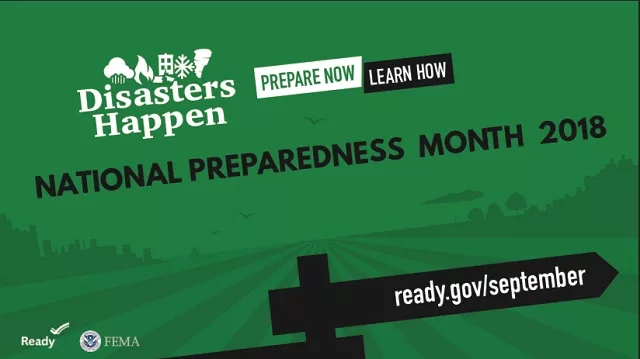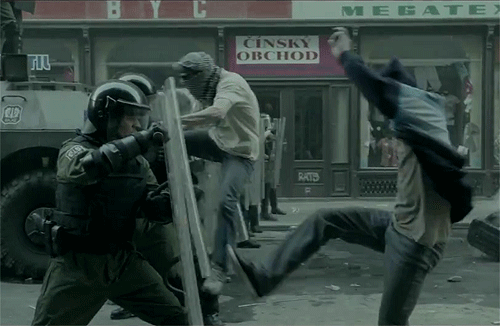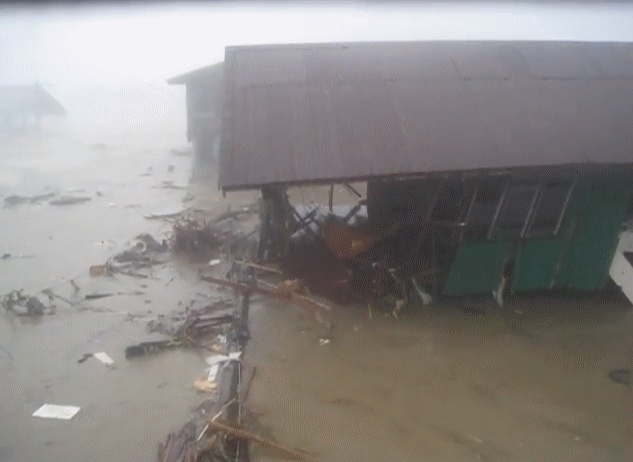
National Preparedness Month (NPM), recognized each September, provides an opportunity to remind us that we all must prepare ourselves and our families now and throughout the year. This is especially true for our region considering the nearby New Madrid Fault Zone. But earthquakes are not the only dangers we face. How many remember the ice storms that crippled our region in the past.
 There are threats from many different directions, all of which could have a major impact on our lives. Disasters don’t plan ahead…but you can. Disasters will happen again. The time to prepare is now. Waiting until the last minute, or waiting until a disaster strikes is probably the stupidest thing you can do. Depending on the severity of the disaster it could get you and the ones you love killed. I know the reality of preparing, most people, even those who claim to be prepared, don’t take their preparedness planning very seriously. And no matter how many posts I write about preparedness, a majority of people – even many of you reading this article – are going to wait until the final moments to do anything about it. I am using these strong statements because I want you all to be ready when the worst happens.
There are threats from many different directions, all of which could have a major impact on our lives. Disasters don’t plan ahead…but you can. Disasters will happen again. The time to prepare is now. Waiting until the last minute, or waiting until a disaster strikes is probably the stupidest thing you can do. Depending on the severity of the disaster it could get you and the ones you love killed. I know the reality of preparing, most people, even those who claim to be prepared, don’t take their preparedness planning very seriously. And no matter how many posts I write about preparedness, a majority of people – even many of you reading this article – are going to wait until the final moments to do anything about it. I am using these strong statements because I want you all to be ready when the worst happens.

Make a plan today. Your family may not be together if a disaster strikes, so it is important to know which types of disasters could affect your area. Know how you’ll contact one another and reconnect if separated. Establish a family meeting place that’s familiar and easy to find. Put together a plan by discussing these 4 questions with your family, friends, or household to start your emergency plan.
- How will I receive emergency alerts and warnings?
- What is my shelter plan?
- What is my evacuation route?
- What is my family/household communication plan?
As you prepare your plan, tailor your plans and supplies to your specific daily living needs and responsibilities. Discuss your needs and responsibilities and how people you trust can assist each other with communication, care of children, business, pets, or specific needs like the operation of durable medical equipment. Create your own personal network for specific areas where you need assistance. Keep in mind some these factors when developing your plan: Your first priority is delegating duties to everyone in your home or group.

This isn’t a one-man challenge; the more hands that you can have on deck, the easier it will be to get ahead of the danger. Remember, you will not be the only one scrambling for supplies. It may not be safe to be in areas where the are large numbers of people.
Immediately start filling any containers you can find with water. Depending on the disaster, municipal water supplies can become compromised relatively quickly, making even the water coming out of your faucet unsafe to drink. If you have a Water BOB fill it immediately, or fill every container you can find and seal it with plastic wrap. Water is going to be one of your top priorities so get this one done quickly!
Head to the bank, get all the cash you can get. Electronic payments are anything but secure, and anything from a cyber-attack on the banks to failures in the power grid can mean being stuck without a way to buy your last minute supplies. Having cash on hand during a disaster is essential; don’t count on the plastic in your wallet!

Stock up on food and water. If the coming problems are short-term in nature, stock up on food that you can eat without cooking. If the disaster looks like it could turn into a long-term crisis, stock-up on these long-term food supplies now. Don’t forget to buy as many bottles of water as you can.
Fill up your Gas Tank: You never want to let you tank fall below half filled; once you know a disaster is coming you need to start topping off all of your vehicles in case gas deliveries are interrupted. If possible, and if you have a safe way to store it, fill as many extra gas containers as you can store.
Buy as many batteries as you can. From marine grade batteries that can be used to recharge items like cell phones, tablets, and other emergency gear to AA batteries and other standard sizes, you can’t have enough batteries on hand.
Get your Medical Supplies in Order. If you have a medical condition, now is the time to refill all of your prescriptions before it’s too late.
Charge Everything. From your rechargeable batteries to your cell phones and tablets, charge everything now. It may be your last chance!

Build a Shelter within your Shelter: Depending on the conditions, make sure you have the appropriate gear in place to regulate your temperature should the grid go down. Pull out all your seasonal clothing (hats, socks, gloves, etc.) gather your blankets, and make a quick plan on what items you need to buy in order to survive without power.
Grab a backpack and put together a quick Bug Out Bag: Hopefully, you already have one; but then again this is an article about last minute preparedness. Immediately grab the supplies you would need to survive an extended emergency away from home, should the worst happen and an evacuation is ordered you need to have everything in place to leave at a moment’s notice. This will be a good start to your family’s emergency plan. There is a lot of information on the internet. Preparing will give you much greater peace of mind when any disaster occurs.





